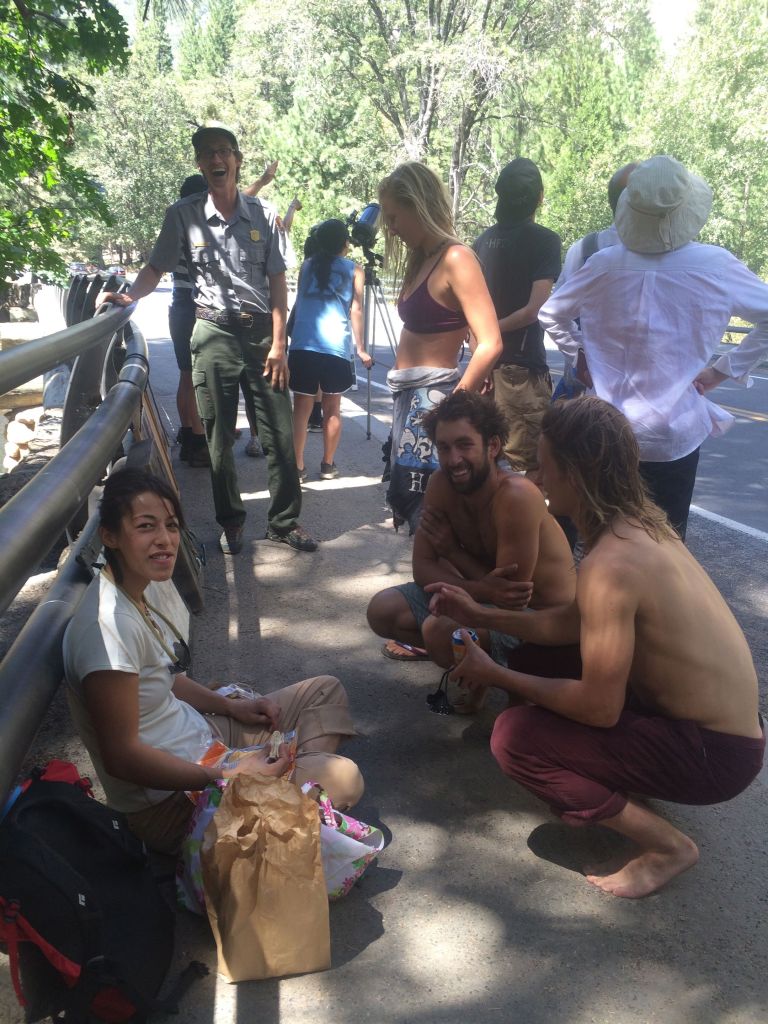

Climbing The Nose of El Capitan is one of the greatest joys a rock climber can experience – well several days worth of the greatest joys as most folks spend, on average, four days climbing the route their first time. The Nose has it all: a short approach, perfect rock quality, an abundance of stances and ledges, and, of course, endless splitter cracks. Once you’ve climbed it once, climbing the Nose in a day, or doing a Niad, is a reasonable goal for many climbers.
Are you good enough? Onsight?
For most folks, onsighting a Niad would be epic. The Nose, while relatively straightforward, has a million quirky moves that flow much smoother the second, third, or fourth time. It’s 28 pitches, so a few extra minutes per pitch, learning the lay of the land, could quickly add hours to an onsight attempt. I’d say you have to breeze up Astroman in 6 hours or so, and knock off the Regular NW Face on Half Dome in 8 – 9 hours, to even consider going for an onsight Niad. Burly, but onsight is the purest style, for sure.
Once you’ve climbed the Nose once, you may find that you begin fantasizing about ascending those endless perfect cracks unfettered with haul lines, haul bags, extra gear, etc. To be free on the Nose! Just cruising pitches with a good friend, following quickly with a light pack, maybe even simul-climbing the 5.5 climbing on and off of Sickle Ledge. FreeBird! To consider going for a Niad you will want to climb some ‘warm-up’ routes, like (these are onsight times):
South Face of Washington Column in 8-10 hours
Northeast Buttress of Higher Cathedral 6-8 hours
Regular NWF on Half Dome in 16-18 hours
Southwest Face of Liberty Cap in 10-12 hours
Pegasus on Quarter Dome in 9-11 hours
How do you do it?
Fitness is the ultimate requirement for a Niad. Fitness, and you need at least one member of your team to be able to lead 5.10 trad in Yosemite smoothly/quickly. Most likely, you will have already climbed the Nose once, so personally I would recommend resisting the temptation to endlessly practice the first 4 – 9 pitches – you will get a much better challenge, and learn to think more sharply on a long climb, if you do the excellent ‘warm-up’ climbs on the list above.
Does any special equipment make a difference on the Niad?
Cams: For sure the lightest cams you can get, because you need an extra set for short fixing, are best for the Niad. As of 2017, Totem and Totem Basic cams are miles ahead of the competition, with Fixe Aliens (the new ‘revolution’ model, or the older ‘original’ versions only) work great, and BD X4s are a distant 3rd place behind them. (The other small cams on the market aren’t worth mentioning they’re so much worse than these three). The Totem’s unique shape means they fit in the flared pin scars of Yosemite incredibly well. If you are going to aid the upper part of the route (mostly steep 5.10 and 5.11), then one each of the Gold and Red(two bigger sizes) Omega Pacific Link Cams can also be a huge help on the Niad. The top 8-9 pitches of the Nose follow mostly 1″ – 2″ cracks, so you can just push a Link Cam up, while free climbing, or walk two Link cams up, if aiding.
Shoes: For sure you need a pair of free shoes that you can wear somewhat comfortably for several hours, including occasionally standing in aiders. The pair you wore when you climbed the Nose are probably perfect.
Rope: Just like with traditional, overnight, bigwall climbs, having a new rope for a big ascent can put a little extra bounce in your high step – just make sure to take it to the gym or crag a couple times before the big climb to get all the kinks/coils out. While many folks bring just one rope on the Niad (60m, 9.8 – 10.1 is best), sixty meters of four mil rope weighs just a few pounds, and could save you from having to leave a lot of gear if you have to bail.






